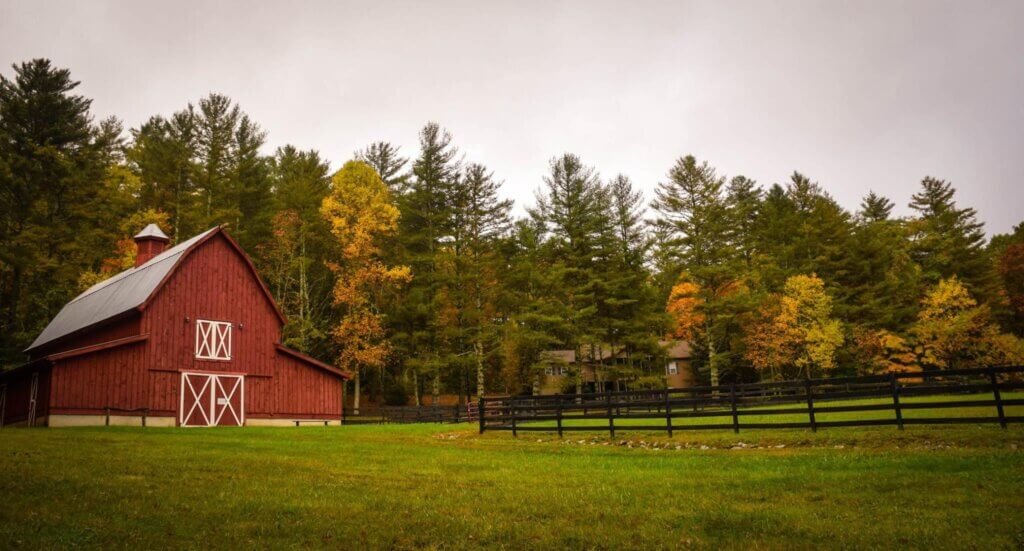So you’ve always dreamed of starting your own small farm from scratch, but you’re not quite sure where to begin? Don’t worry, you’re not alone. The idea of transforming a bare piece of land into a thriving agricultural paradise can be overwhelming, but with the right guidance and a little hard work, it’s definitely within your reach. In this article, we will explore some key steps you can take to kickstart your journey towards starting a small farm from scratch. From land selection and planning to choosing the right crops and animals, we’ve got you covered. So grab your gardening gloves and let’s get started!
Choosing the Right Location
Consider the Climate and Soil Conditions
Choosing the right location for your small farm is crucial for its success. The first aspect to consider is the climate and soil conditions of the area. Different crops and livestock thrive in different climates and soil types, so it’s important to research and select a location that is suitable for the specific farming activities you plan to undertake. Consider factors such as average temperatures, rainfall patterns, and soil fertility. By understanding these conditions, you will be able to choose a location that will provide an optimal environment for your farm.
Evaluate Access to Utilities and Transportation
Another important factor to consider when choosing a location is the access to utilities and transportation. In order to operate efficiently, your farm will require access to utilities such as water and electricity. Evaluate the availability and reliability of these services in the area you are considering. Additionally, consider the proximity of your farm to transportation networks such as roads and highways. This will ensure that you can easily transport your products to markets and distribution centers, reducing transportation costs and increasing overall efficiency.
Assess the Availability of Water Sources
Water is essential for any farm, so it’s crucial to assess the availability of water sources in the location you choose. Consider the presence of natural water sources such as rivers, lakes, or wells, as well as the availability of irrigation systems. Adequate and reliable access to water is vital for the health and productivity of your crops and livestock. Additionally, consider any legal restrictions or regulations regarding water usage in the area. Taking all these factors into account will help ensure that you have a sustainable and reliable water source for your farm.
Developing a Business Plan
Define Your Farming Goals and Objectives
Before starting a small farm, it’s important to define your farming goals and objectives. What do you hope to achieve with your farm? Are you looking to produce organic vegetables, raise livestock, or specialize in a particular crop? Defining your goals will help guide your decision-making process and determine the direction of your farm. It’s important to have a clear vision and set specific, measurable goals that you can work towards.
Research Potential Markets and Customers
In order to have a successful small farm, it’s important to research potential markets and customers for your products. Identify who your target customers are and what their preferences and demands are. Research local farmers’ markets, grocery stores, and restaurant suppliers to understand the demand for your products. Additionally, consider the competition in the area and identify any unique selling points or market niches that you can leverage. By understanding the market and your customers, you will be able to tailor your farming practices to meet their needs and increase your chances of success.
Estimate Start-up Costs and Financial Resources
Starting a small farm from scratch requires careful financial planning. It’s important to estimate the start-up costs and assess your financial resources before embarking on your farming journey. Consider expenses such as land purchase or lease, equipment and tools, seed and livestock, permits and licenses, and operating costs. Additionally, evaluate your personal financial resources and explore potential funding options such as loans, grants, or partnerships. Having a realistic understanding of your financial situation will enable you to make informed decisions and ensure that you have the necessary resources to start and sustain your farm.

Securing Land and Equipment
Purchase or Lease Farmland
Securing the right land is a crucial step in starting a small farm. Depending on your financial situation and long-term goals, you can choose to either purchase or lease farmland. Purchasing land provides long-term stability and the ability to customize the property to your specific needs. However, it requires a significant upfront investment. On the other hand, leasing land allows you to start farming with lower initial costs, but you may have limited control over the property. Consider factors such as location, size, soil quality, and zoning regulations when selecting your farmland.
Invest in Essential Farm Equipment and Tools
Once you have secured your farmland, it’s important to invest in essential farm equipment and tools. The specific equipment and tools you will need depend on the type of farming activities you plan to undertake. For example, if you’re growing crops, you will need tools such as tractors, tillers, and harvesting equipment. If you’re raising livestock, you will need equipment such as fencing, animal housing, and feeding systems. Carefully assess your needs and invest in high-quality equipment that is suited to your specific farm operations. This will ensure efficiency and productivity in your day-to-day tasks.
Consider Renting or Sharing Equipment
If purchasing all the necessary farm equipment is not financially feasible, consider renting or sharing equipment with neighboring farmers. Renting equipment allows you to access the tools you need without the full upfront investment. Sharing equipment with other farmers can also be a cost-effective solution, as it allows you to split the costs and maintenance responsibilities. Look for local equipment rental companies or join farmer networks to explore these options. By considering alternatives, you can save money and still have access to the equipment you need.
Obtaining Necessary Permits and Licenses
Check Local Zoning and Land Use Regulations
Before starting any agricultural activities, it’s important to check the local zoning and land use regulations in the area. Different regions have different regulations regarding farming activities, land use, and conservation. Make sure your intended farming practices comply with these regulations to avoid legal issues. Determine if your chosen location is zoned for agricultural use and if there are any restrictions on the type of farming activities you can undertake. Consulting with local government authorities or zoning officials can help clarify any questions or concerns you may have.
Apply for Required Permits and Licenses
In addition to complying with zoning and land use regulations, you may also need to obtain specific permits and licenses to operate your small farm legally. The requirements vary depending on the location and the type of farming activities you plan to undertake. Common permits and licenses include agricultural permits, business licenses, water rights permits, and environmental permits. Research the specific requirements in your area and ensure that you complete all the necessary paperwork and applications. Obtaining the required permits and licenses will demonstrate your commitment to operating within legal and environmental guidelines.
Comply with Health and Safety Standards
Running a small farm requires adhering to health and safety standards to protect your workers, animals, and consumers. Familiarize yourself with the relevant health and safety regulations, including those related to food handling, worker safety, and animal welfare. Implement proper sanitation practices, provide appropriate protective gear for your workers, and ensure the humane treatment of your animals. Regularly inspect your farm for potential hazards and implement any necessary preventive measures. By prioritizing health and safety, you will create a conducive and responsible farming environment.

Developing a Crop or Livestock Plan
Research and Select Suitable Crops or Livestock
Once you have secured your land and equipment, it’s time to develop a crop or livestock plan. Research and select crops or livestock that are suitable for your climate, soil conditions, and market demand. Consider factors such as the profitability, growth cycle, and maintenance requirements of different crops or livestock. Consulting with local agricultural extension services, experienced farmers, or agronomists can provide valuable insights and guidance in making these decisions. Choose crops or livestock that align with your farming goals and have the potential for success in your chosen location.
Consider Crop Rotation and Diversification
To maintain the long-term health and productivity of your farm, it’s important to consider crop rotation and diversification. Crop rotation involves alternating different crops on the same piece of land over multiple growing seasons. This helps prevent soil depletion, control pests and diseases, and improve overall soil fertility. Diversification, on the other hand, involves growing a variety of crops or raising multiple livestock species. This not only reduces the risk of crop failure or disease outbreak but also allows you to cater to a wider range of market demands. By incorporating crop rotation and diversification into your farming practices, you will ensure sustainable and resilient production.
Plan for Feed, Seed, and Healthcare Needs
As part of your crop or livestock plan, it’s important to plan for the feed, seed, and healthcare needs of your farm. For livestock, determine the appropriate feed and nutritional requirements for each species and ensure a reliable supply. For crops, select high-quality seeds and develop a comprehensive planting schedule. Additionally, consider the healthcare needs of your livestock and establish relationships with veterinarians or animal health professionals. Implement preventive healthcare practices, such as vaccination programs or pest control measures, to ensure the well-being and productivity of your animals. Proper planning and management of feed, seed, and healthcare needs are essential for a successful farm operation.
Implementing Sustainable Farming Practices
Adopt Organic or Regenerative Farming Methods
With increasing consumer demand for sustainable and eco-friendly products, adopting organic or regenerative farming methods can be advantageous for your small farm. Organic farming avoids the use of synthetic fertilizers, pesticides, and genetically modified organisms, relying instead on natural methods of pest and weed control. Regenerative farming, on the other hand, focuses on improving soil health, biodiversity, and carbon sequestration. Both practices promote environmental sustainability and can enhance the quality and marketability of your products. Consider the requirements and certifications associated with these practices and determine if they align with your farming goals.
Utilize Integrated Pest Management Strategies
Managing pests is an important aspect of any farming operation. Instead of relying solely on chemical pesticides, it’s beneficial to utilize integrated pest management (IPM) strategies. IPM combines various pest control methods, such as biological control, crop rotation, and cultural practices, to minimize pest damage while minimizing the use of chemicals. Conduct regular pest monitoring, identify the specific pests affecting your crops or livestock, and implement appropriate control measures. By utilizing IPM strategies, you can effectively manage pests while minimizing the potential harm to the environment and promoting the overall health of your farm.
Implement Water Conservation Techniques
Water conservation is crucial for sustainable farming, especially in areas with limited water resources. Implementing water conservation techniques can help reduce water usage and minimize the environmental impact of your farm. Consider measures such as drip irrigation, mulching, and rainwater harvesting systems to optimize water efficiency. Monitor and analyze water usage on your farm to identify areas where improvements can be made. By implementing water conservation techniques, you can not only reduce your environmental footprint but also lower your operating costs and ensure long-term water availability for your farm.

Building Proper Infrastructure
Construct Barns, Sheds, and Fencing
Building proper infrastructure is essential for the successful operation of your small farm. Constructing barns, sheds, and fencing provides shelter and security for your livestock. The type and size of these structures will depend on the specific needs of your animals and the climatic conditions of your area. Ensure that your structures are well-designed, sturdy, and safe to protect your livestock from the elements and potential predators. Additionally, consider the storage needs of your farm, such as hay storage or equipment storage, and construct appropriate facilities. Investing in proper infrastructure will create a comfortable and efficient environment for your farm.
Install Irrigation Systems and Drainage
To ensure proper watering of your crops and to manage excess water, it’s important to install irrigation systems and drainage on your farm. Irrigation systems provide a controlled and efficient method of delivering water to your crops, ensuring optimal growth and productivity. There are various types of irrigation systems available, such as sprinklers, drip irrigation, and pivot systems, each with its own advantages and considerations. Additionally, implement proper drainage systems to prevent waterlogging and ensure that excess water is effectively removed from your fields. Proper installation of irrigation systems and drainage will help optimize water usage and protect your crops from water-related issues.
Create Storage and Processing Facilities
Creating storage and processing facilities is essential for efficiently managing your farm’s products. Depending on the type of crops or livestock you have, you may need storage facilities for harvested crops, refrigeration for perishable produce, or processing facilities for value-added products. Consider the necessary infrastructure required to handle and store your products safely and maintain their quality. Utilize appropriate storage methods such as cold storage, drying facilities, or root cellars to preserve the freshness and shelf life of your products. By investing in proper storage and processing facilities, you can ensure that your products reach the market in optimal condition.
Establishing Marketing and Distribution Channels
Identify Target Markets and Customers
To successfully sell your farm products, it’s important to identify your target markets and customers. Understanding who your products are intended for will help you tailor your marketing and distribution strategies accordingly. Research the preferences and demands of your target customers, such as grocery stores, farmers’ markets, restaurants, or direct-to-consumer sales. Consider factors such as convenience, price sensitivity, and product quality when selecting your target markets. By identifying your target markets, you can focus your marketing efforts and increase the chances of success in promoting and selling your products.
Develop a Brand and Marketing Strategy
Developing a strong brand and marketing strategy will help differentiate your farm and products in the market. Consider your farm’s unique selling points, such as organic certification, sustainability practices, or locally sourced ingredients, and incorporate them into your branding. Create a compelling brand story and logo that resonates with your target customers. Develop a marketing strategy that includes online and offline channels, such as social media, websites, local advertising, or participation in community events. Utilize these channels to communicate your brand values, educate consumers about your products, and build a loyal customer base.
Explore Direct or Wholesale Distribution Options
When it comes to distributing your farm products, you have the option of direct or wholesale distribution. Direct distribution involves selling your products directly to consumers through channels such as farmers’ markets, on-farm stores, or online platforms. This allows you to establish a personal connection with your customers and potentially earn higher profit margins. Wholesale distribution, on the other hand, involves selling your products to retailers, grocery stores, or restaurants. This can provide larger sales volumes but may involve lower profit margins. Consider the pros and cons of each distribution option and determine the best approach based on your farm’s capacity and market demand.

Building a Support Network
Join Local Farming Associations and Networks
Building a support network is invaluable in the farming industry. Joining local farming associations and networks can provide access to resources, knowledge, and support from experienced farmers. These organizations often offer workshops, training programs, and mentoring opportunities that can help you enhance your farming skills and stay updated with industry trends. In addition to learning opportunities, being part of a farming community can provide emotional support and a sense of camaraderie. Networking with other farmers can also lead to potential collaborations, partnerships, or market connections. By actively participating in local farming associations and networks, you can tap into a wealth of support and expertise.
Attend Workshops and Training Programs
Continuing education is essential in the ever-evolving field of farming. Attending workshops and training programs can help you stay updated with the latest farming techniques, technologies, and regulations. Look for workshops or training programs offered by agricultural extension agencies, universities, or private organizations. These programs often cover a wide range of topics, such as crop management, livestock husbandry, business planning, or sustainable farming practices. By investing in your education and professional development, you can continuously improve your farming skills and stay competitive in the industry.
Establish Relationships with Suppliers and Buyers
Establishing strong relationships with suppliers and buyers is crucial for the success of your small farm. Suppliers provide you with the necessary inputs, such as seeds, feed, or equipment, while buyers are the ones who purchase your products. Cultivate relationships with reliable suppliers who can provide high-quality inputs on a consistent basis. This will ensure that you have the necessary resources to maintain the productivity of your farm. Similarly, build relationships with buyers who share your values and can provide a consistent market for your products. Maintaining good communication and delivering on your commitments will help foster long-term partnerships and ensure the sustainability of your farm.
Implementing Efficient Farm Management Systems
Organize and Maintain Farm Records
Efficient farm management requires organizing and maintaining detailed farm records. Proper record-keeping helps you monitor and track your farm’s performance, make informed decisions, and comply with legal and financial requirements. Keep records of your expenses, income, inventory, production yields, and any other relevant data. Utilize digital tools or farm management software to streamline the record-keeping process and generate useful reports. Regularly review and analyze your records to identify areas for improvement and make data-driven decisions. By maintaining accurate and up-to-date farm records, you can ensure efficient operations and optimize your farm’s productivity.
Implement Inventory and Yield Management
Managing your farm’s inventory and monitoring yield is essential for efficient resource allocation and profitability. Implement inventory management systems to track the availability and usage of inputs such as feed, seed, or fertilizers. This will help you prevent stockouts and waste, ensuring that you have the necessary resources to meet your farming needs. Similarly, monitor and analyze your crop or livestock yields to evaluate productivity and identify areas for improvement. Understanding your yields will enable you to optimize your production processes, identify potential issues early on, and make necessary adjustments. By implementing effective inventory and yield management practices, you can maximize your farm’s efficiency and profitability.
Utilize Technology for Monitoring and Analysis
In today’s digital age, utilizing technology can significantly enhance the efficiency and productivity of your farm management. Explore the use of farm management software, mobile applications, or monitoring systems that can automate various tasks and provide real-time data. These tools can assist in tasks such as record-keeping, inventory management, weather monitoring, or pest management. Additionally, consider the use of farm-specific hardware such as sensors, drones, or GPS systems to gather data and optimize your farming practices. Embracing technology not only saves time and reduces manual labor but also provides valuable insights for decision-making and enhances overall farm management.
Starting a small farm from scratch is an exciting and rewarding endeavor. By following the steps outlined in this comprehensive article, you can lay a strong foundation for your farm’s success. From choosing the right location to implementing efficient farm management systems, each section provides valuable insights and guidance to help you navigate the journey of starting and running your own small farm. Remember that starting a farm requires patience, perseverance, and continuous learning. By incorporating sustainable practices, building a support network, and staying adaptable to changing circumstances, you can realize your farming goals and contribute to a sustainable and resilient food system. Good luck on your small farm adventure!



